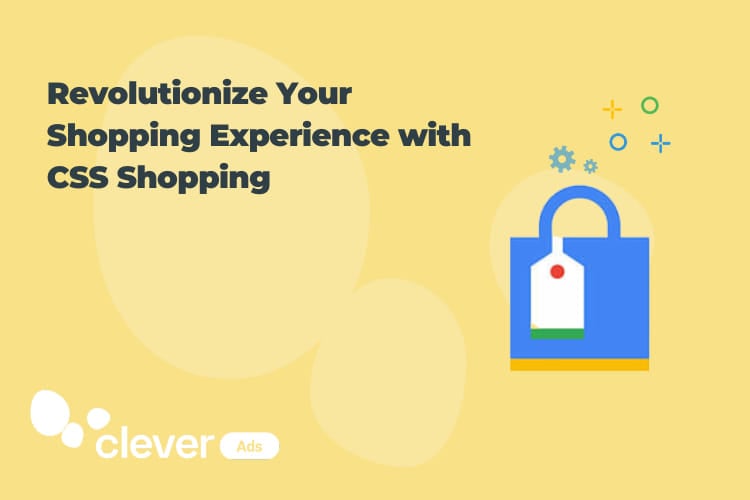What is CSS Shopping and How Does It Work? Your Ultimate Guide
CSS shopping has become an increasingly popular topic in the world of eCommerce. But what exactly is CSS shopping, and how does it work? In this blog post, we’ll explore CSS shopping in depth and reveal how it can benefit your online business.
In the world of online advertising, CSS stands for Comparison Shopping Services. Here are the benefits upfront — CSS shopping can be your best friend and a crucial advantage for eCommerce businesses looking to improve their visibility on search engines and increase sales.
An overview of of how CSS shopping works:
In layman’s terms — it aggregates product listings from multiple retailers and displays the results to consumers in a side-by-side, “comparison” format. This enables searchers to easily compare prices, shipping options, and other important details before making a purchase.
Going a bit more granular — CSS shopping refers to the process where Comparison Shopping Services bid to place Shopping ads on Google’s general search results pages on behalf of merchants they represent. In fact, Google Shopping itself acts as a CSS, bidding on behalf of merchants alongside other CSSs. From here out, whenever we talk about any other CSS that is not Google’s, we’ll refer to it as a “third party CSS”.
As a merchant, you have multiple options when it comes to participating in Shopping ads on the Google general search results page. You can provide your product data to any CSS, including Google Shopping as mentioned previously. Alternatively, you can even use several third party CSSs and Google’s CSS, simultaneously to maximize exposure!
Each CSS uses a separate Merchant Center account to represent individual merchants. These accounts allow them to upload inventory, run Performance Max Campaigns, and Shopping Campaigns on behalf of the merchant. All campaigns must follow specific Shopping ads policies and product data requirements to ensure users are directed to the merchant’s landing page for purchasing the advertised product. Here, as with all digital advertising campaigns, consistency across the board is key.
What’s the value that a third party CSS can bring me?
There are basically three advantages:
- 20% Reduced CPC (immediate increased profit);
- It’s a Bidding Advantage. There’s no 20% refund/cash back/etc. However, Google offers third party CSSs this bidding advantage to level the playing field, so to speak — and allow other third party CSSs an equal chance to offer their service to the end user, internet searchers.
- Potential to double your ad Presence; and
- Growth Opportunity (if 20% savings is reinvested into the campaigns, downstream increased profit).
Why does third party CSS shopping even exist?
To be brutally honest, does it really matter? There are tons of articles and blogs covering this topic you can read up on, if you’re interested! The bottom line is that if you’re looking to advertise on Google in European markets — third party CSS shopping is something you can leverage, and it’s seemingly here to stay. Right now, these are the markets in which third party CSS shopping is available: Austria, Belgium, Czech Republic, Denmark, Finland, France, Germany, Greece, Hungary, Ireland, Italy, the Netherlands, Norway, Poland, Portugal, Romania, Slovakia, Spain, Sweden, Switzerland, and the United Kingdom.
So how can I sign up for third party CSS shopping?
There are different options available but our advice is to go with a Premier CSS shopping partner. You can find these partners here and choose the one you think is right for you personally, your business, and your goals.
Here are some more of the most common questions about CSS shopping that we see:
Do I need to use a CSS to place Shopping ads on the Google general search results page?
Yes, only CSSs can place Shopping ads. Again, keep in mind you can use Google Shopping (its own proprietary CSS) or any other third party CSS. Furthermore, you can advertise with several CSSs, simultaneously.
Do I have to pay Google for ads placed by CSSs on my behalf?
No, CSS Shopping advertisers (including those on Google’s Shopping CSS) pay Google for clicks on the ads they (Google) places; hence, PPC (Pay-per-click). Then, depending on your payment arrangement (i.e., if you’re the bill-to-customer paying Google directly for the clicks on your Shopping ads, or if you work with an agency who acts as the bill-to-customer, paying Google for the clicks and invoicing you as their client) — the CSSs can choose their invoicing method for merchants. E.g., using a cost-per-click (CPC) model.
Will my products/Shopping ads be shown multiple times, next to each other?
Google strives to prevent the same offer from appearing more than once in an ad unit, even if uploaded by different CSSs. In rare cases where Google cannot detect duplicate offers, both may appear in the same Shopping unit. This could mean a greater chance of a searcher seeing your ad, clicking it, reaching your landing page, and eventually making that sweet purchase!
To Conclude:
In wrapping up, CSS shopping is a valuable tool for eCommerce businesses looking to increase visibility on search engines and boost sales. By partnering with a third party CSS, merchants can optimize their online presence and bolster their overall advertising strategy.




